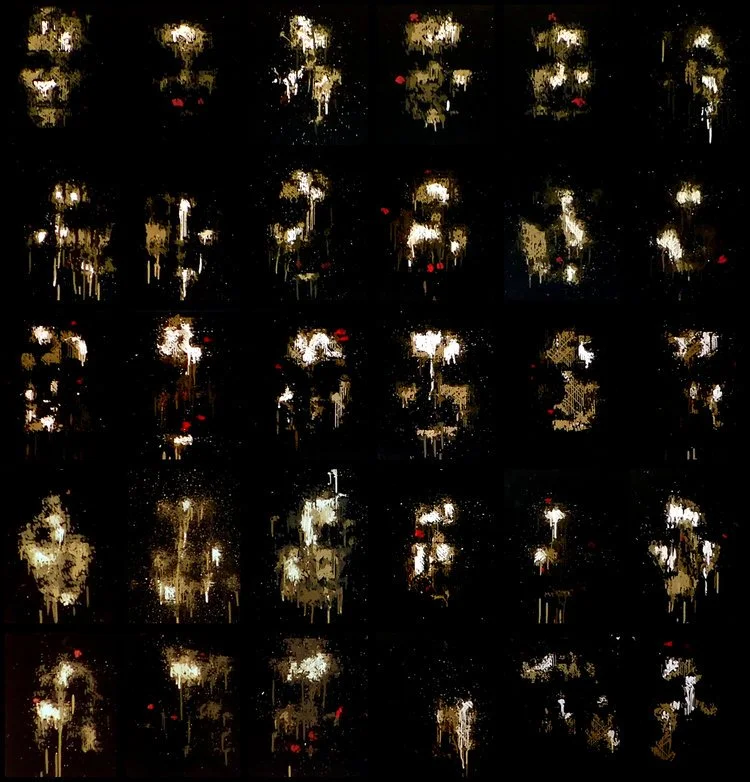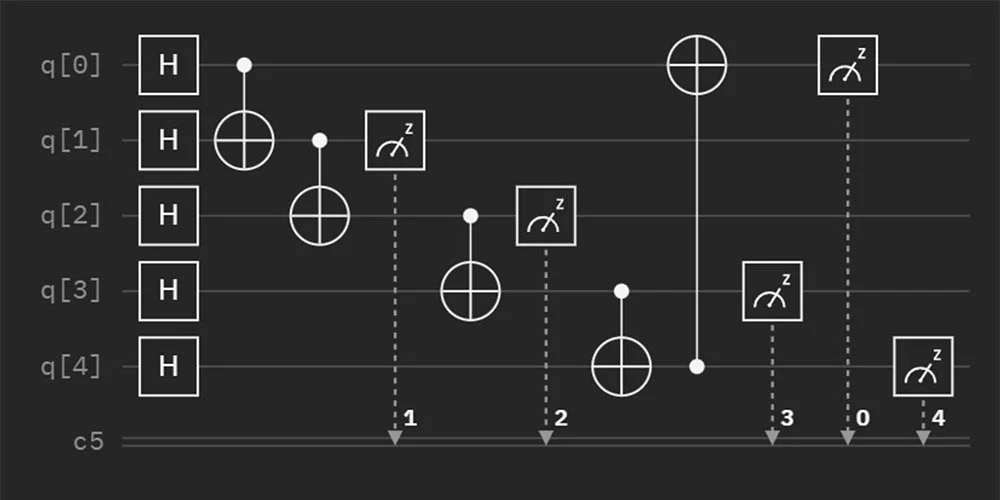Quantum Face
Low resolution version of the piece is above…
It is a face looking back to my early SuperRare works that were minted back in 2018
that won first place as part of Robot Art 2018, and international robotic art contest with $100,000 purse
Current holders of that series include Cozomo, XCOPY, Sonofabeach, the MOMUS collection, Matrix, and Hackatao
XCOPY called this one his favorite NFT in a Forbes article.
Here is another that shows a collection of them in a SR 1/1 owned first by artonymousartifakt then by Sonofabeach
Also here is detailed write up of how these Emerging AI Face were created in collaboration with Massive Attack’s Robert del Naja
https://www.cloudpainter.com/ai-art-blog/3d
So what is new about Quantum Imagined Face?
Biggest thing going on here is these are procedurally generated on actual quantum computers.
Also while previous AI Imagined Faces were GAN’s painted by a robot until the robot could recognize a face, these use much more sophisticated models including newer Diffusion Models.
The Quantum Element
The word quantum right now is overused as a marketing strategy. For example TV’s advertise being QLED, using Quantum Dot technology. But to scientists Quantum Dots have a very specific purpose.
They are atoms that we can manipulate and they exhibit and adhere to quantum principles - some of the principles being
1: Superposition - the fact that a qubit (atom in a quantum computer) can hold the value 0, or 1, or any combination of both in a probabalistic. In traditional computing a bit is used which is either 0 or 1 of course.
2: Entanglement - Two qubit can be entangled such that by reading the value of one, you are also reading the value of the other.
3: Interference - The qubits can be programmed to interfere with each other - see the double split experiment to see what this means. https://en.wikipedia.org/wiki/Double-slit_experiment
4: Noise - quantum computers are very glitchy and noisy, and even individual qubits can behave inconsistently. But this is part of the charm for now. Soon we will probably get rid of this noise, but for now it is sort of a natural glitch.
5: TRUE RANDOMNESS - While traditional computers simulate randomness they are not truly random. So all these generative art projects that are made using a random seed, are not really random. Record and replicate the random seed, and you can run the generative algorithm repeatedly make the exact same piece of art. It is random for all intents and purposes, but deterministic in the end. Measuring atoms on an actual quantum computer, however, can produce truly random results.
So why is this significant?
I have talked with a number of Quantum Scientists and even collaborated with a Quantum scientist/artist named Russel Huffman on using the outputs of ACTUAL quantum computers and they all tell me it is an interesting visualization of quantum effects. Take another look…
Notice how it is always moving, never in one place like it is a probabilistic representation of a face. And once a face resolves and is observed, we find it is elsewhere - this is a visualization of Quantum Superposition.
Also notice how there are times where two faces are present moving in and out of one another seemingly separated but related - its an entaglement.
And at times the two faces merge and interfere with each other - interference.
As for noise, its glitchy, perhaps a natural glitch.
These effects are not directly associated with what was happening in the quantum computer when it helped procedurally generate this piece, however, every quantum scientist I talk to tells me this looks like what they would imagine quantum mechanics was personified.
For randomness I put actual atoms into perfect superposition where measuring them would return 1 about half the time and 0 about half the time, then I used those valued to procedurally generate this piece of art. Because of that, it is truly random and can not be replicated ever again, well at least in the lifetime of this universe.
The other AI:
once I had 1000’s of pictures generated from true randomness, I fed them into GANs and Diffusian AI models to come up with the image seen above, a unique never repeatable piece of art that was not only made with quantum mechanics, but visualizes many of the principles behind it.
In the past I relied on my physical painting robots and feedback loops to make my art works unique in the digital world, that is no longer needed if you use quantum computers - though this does have a physical element as well, cause I like using robots to make art.
A robot draw several frames and I put them back into the piece - that’s the crosshatching you can subtly see. Here are some robotic drawings.
Nerdy Details:
Above is the quantum circuit I designed and used on a 5 qubit IBM Quantum Computer to make this piece. I put 5 qubits into superposition, then entangled them all together. Because of this architecture the system is
“maximally entangled in perfect superposition.”
Because of entanglement, if you observe one atom and you are observing them all. And because of superposition, each time you read one, you will get a truly random 50/50 split of 1’s and 0’s. Why not perfectly 50/50? Because there is currently noise in the system.
I showed this circuit to a number of quantum scientists and they told me there were easier ways to get random numbers from a quantum computer, but I was just happy I was able to do this on my own and get random numbers of any kind.
The actual quantum computer this was done on looks like this which is a press photo, so free to use for editorial purposes.
Only a couple dozen or so of these in the world. Almost impossible to access the larger ones though on my last SuperRare 1/1 drop I was actually able to get on IBMQ Montreal 27 qubit machine, IBM’s third largest QPU (Quantum Processing Unit). The work on Quantum Face was done on 5 qubit machines, as an be seen in my quantum circuit design above.
The artist
People like the artist more than the art, so about me
Been making AI art for almost 20 years.
Specialize in painting robots that use AI. First used Deep Learning about 6 years ago, then GANs about 5 years ago. One of the early artists to do so.
But my favorite AI algorithm is my robots photograph their progress and use the photos to make future decisions. So they are responding to the feedback of what they are painting. They make marks, analyze the marks, and proceed with input form the anlaysis.
Was always working in obscurity until around 2015 when I started getting international awards an recognition, but few in the traditional art world. Mostly from tech companies and conferences though some had crossover like a contest I was shortlisted in sponsored by Google and held at the Barbican.
Early cryptoArtist, actually “registered” 128 of the ai imagined faces on BTC blockchain with Verisart before becoming a SuperRare artist in 2018.
And then finally around a year ago my studio became self sufficient thanks to crypto community and most of all thanks to SuperRare.
Pindar







